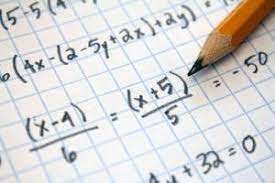Get a Custom Essay Paper that meets your expectations by clicking ORDER
Foundations of Number Sense
Chapter 1 of the text (Sousa, 2015) addresses the foundations of number sense and how this ability develops in humans. Unlike other animals with number sense, humans are separated by the ability to count, which is influenced by numerous factors including language. Based on this week’s readings, address each of the following:
• Sousa discusses how children learn to count. How did YOU learn to count? Who taught you? Where and when? Did you use your fingers? Do you still use your fingers?
• Sousa outlines some of the glaring differences between Asian and Western languages when it comes to learning how to count.
o If you teach, or plan to teach, at the elementary level, do you think your students would benefit from learning numbers according to the Asian language patterns? If so, how could you incorporate these patterns without having them learn a new language? If not, what are the drawbacks?
o If you teach, or plan to teach, at the high school or college level, how do you remediate students who struggle with these basic counting and number sense skills?
• Select examples of strategies from pages 26-28 of the text (Sousa, 2015) that you currently use or plan to use. Explain your rationale.
Below is a partial answer to the above homework questions by one of our writers. If you are interested in a custom non plagiarized top quality answer, click order now to place your order.
Foundations of Number Sense
I learned to count by using a counting chart. I recall that I used to point at numbers on the chart during the counting process. Based on Sousa (2015), the brain imaging played a role in my counting process. The image of the numbers enhanced my counting process. I only used my fingers when adding or subtracting mathematical problems and not counting. Presently, I do not use my fingers in the counting process.
My mind has advanced to be able to count large numbers and carry out addition or subtraction without using my fingers. Moreover, technology has made counting much easier as there are calculators in different devices that can be used in the counting process.
I believe that students will benefit at the elementary level to learn numbers according to the Asian language patterns. My perception is based on Sousa (2015), analysis where the Asian students excel in mathematics when compared to students who learn mathematics using the English language. There are different patterns that I will incorporate into my lessons to enhance their understanding without having them learn a new language.
First, I will concentrate on the repetition of concepts. Secondly, I will break down the syllabus into short units. Lastly, I will introduce games and activities that will have them involved in the lessons. The interest and alertness of the students during the mathematics lesson will improve not only their comprehension of numbers but math as a whole…..
Foundations of Number Sense
Get a Custom Essay Paper that meets your expectations by clicking ORDER









